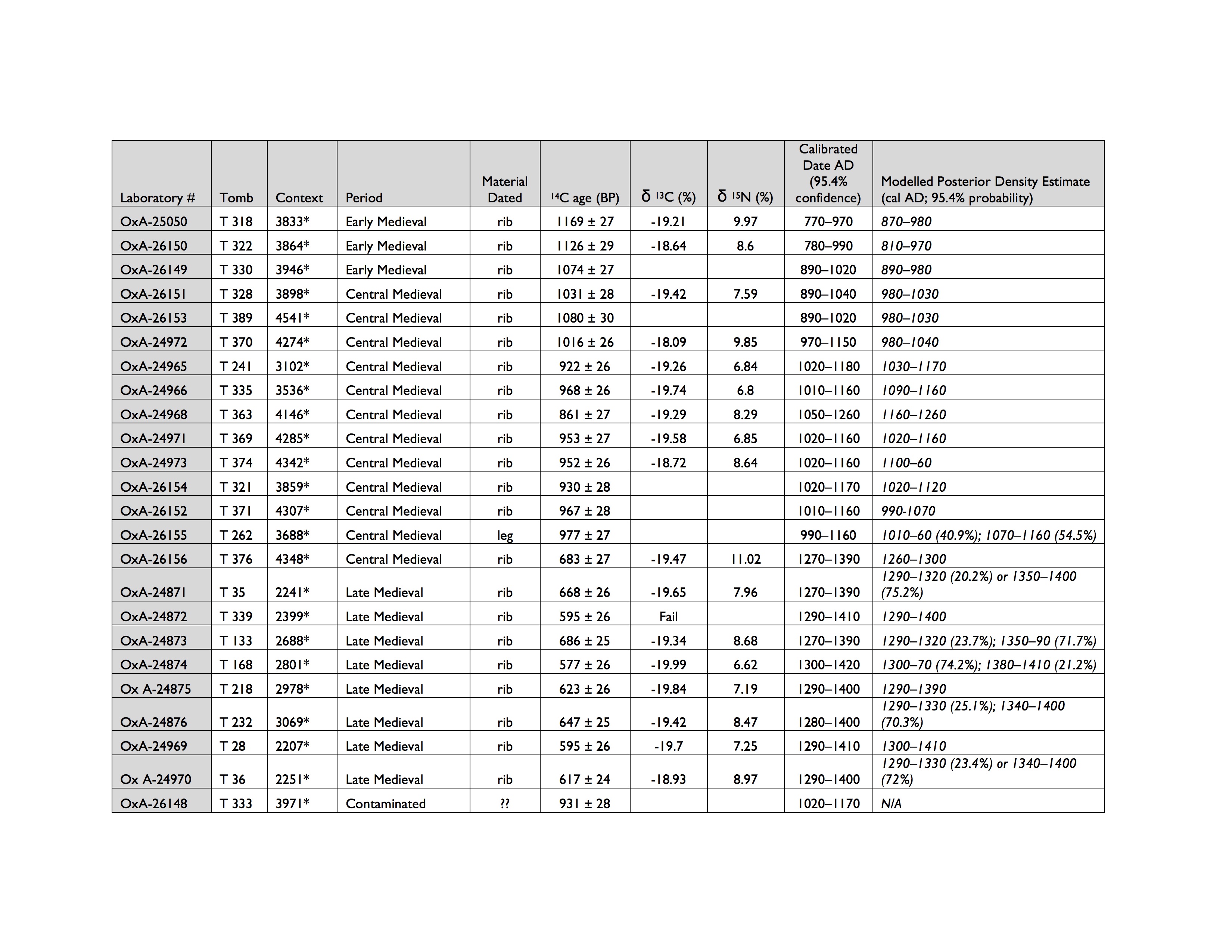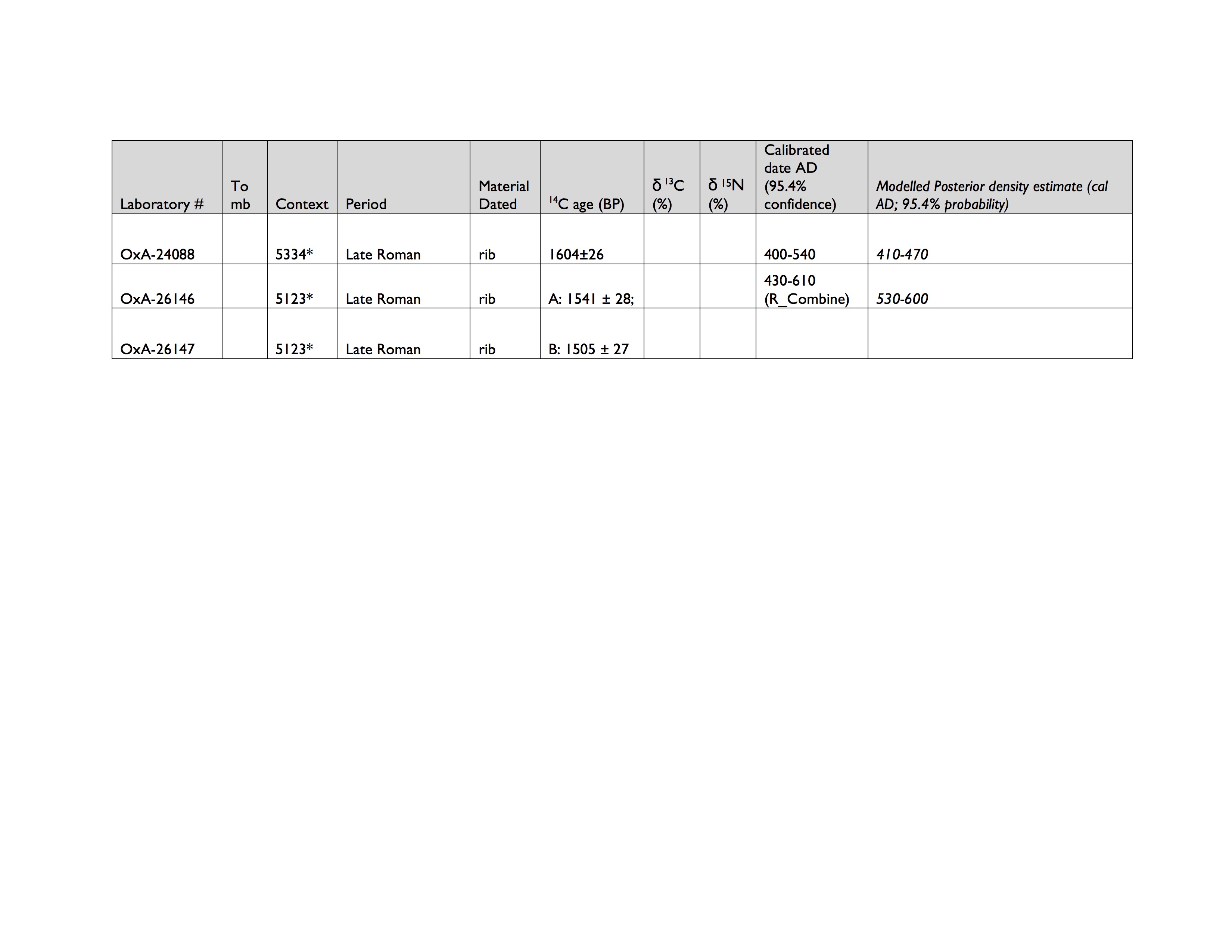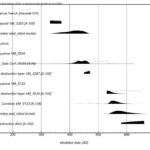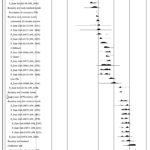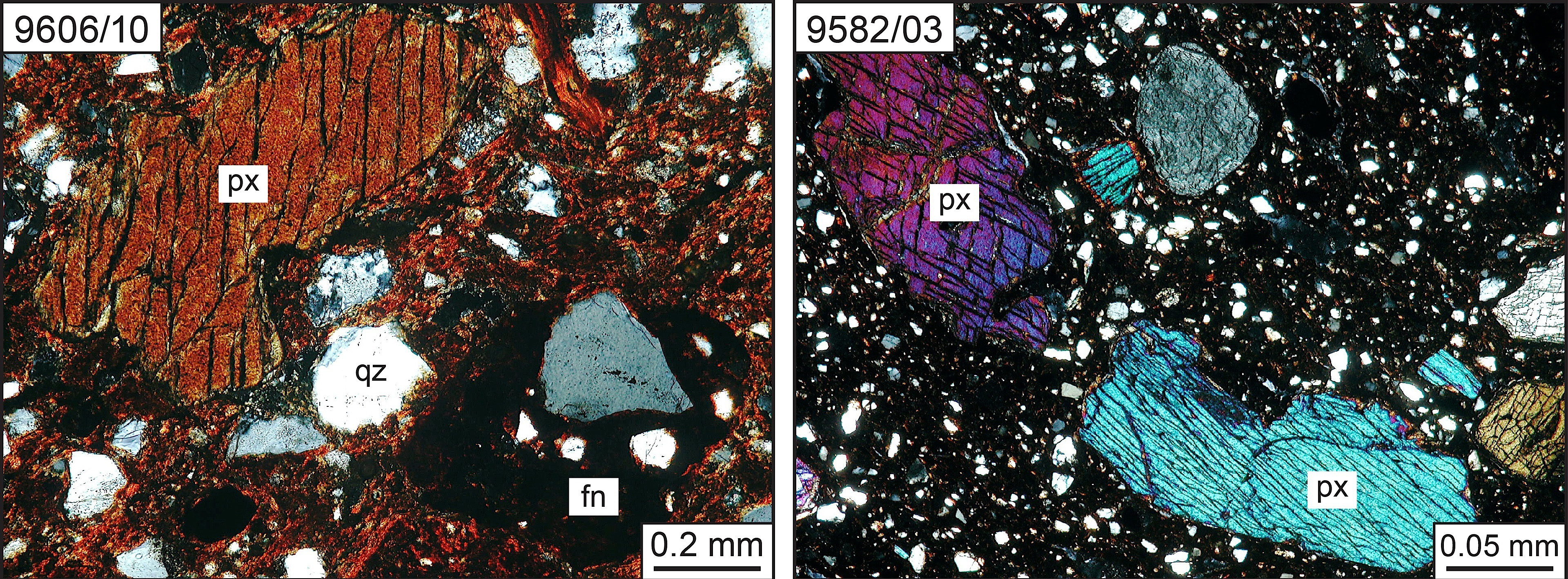Dating late antique and medieval burials is often challenging. Finds are frequently sparse, artefact chronologies are broad and dates are therefore often given on stylistic grounds. At Villamagna, these problems were exacerbated by the difficulty in establishing the relative chronology of different zones. Many walls divided and subdivided the trenches into different areas which could not be stratigraphically related to each other. The medieval cemetery proved particularly challenging to date. Consisting of hundreds of overlapping and intercutting burials in a very small area, it was difficult to establish the relative phasing of individual graves. Radiocarbon dating has the potential to resolve these difficulties by accurately dating graves in the absence of grave goods.1 In Italy, however, radiocarbon dating in classical and medieval contexts has been conducted on a small scale (fewer than five samples per site), which typically dates cemeteries only to the early or late medieval periods. At Villamagna, we established a radiocarbon dating programme within a Bayesian framework with the aim of refining the chronological resolution for a) the late antique barracks and b) the medieval church-cemetery.2
The radiocarbon results
Two radiocarbon dates are available for the infant burials in the late Roman barracks (Trench D; Tab. 1) and 24 are available for the medieval cemetery at Villamagna (Trenches BI, BII and CII; Tab. 2).3 The Oxford Radiocarbon laboratory analyzed 15 samples in 2011 funded by a Franklin Research Grant from the American Philosophical Society. On the basis of these results, a further 10 samples were selected to refine our chronological model and analyzed in 2012 by the NERC-AHRC National Radiocarbon Facility (NRCF grant NF/2011/1/10). All of our radiocarbon samples were human bone from discrete individuals. True replicate measurements were deliberately obtained from HRU 5123* to test the validity of the measurements; following standard practice these were merged before calibration.4 Carbon and nitrogen stable isotope analysis showed that marine resources did not form a significant proportion of the diet at Villamagna.5 The chronological model for the site presented is therefore unlikely to be significantly affected by the diet of the individuals.6
The late antique radiocarbon results
Two radiocarbon dates are available for the barracks at Villamagna (Tab. 1). Our preferred Bayesian model for the chronology of the burials is shown in Figure 1, with a summary of the archaeological information included in the model given in Figure 2. This model incorporates the relative dating information provided by the archaeological sequences of the dated burials and imposes a uniform prior distribution on the spread of the dates. It shows excellent overall agreement (Aoverall = 107.1%) which indicates that the radiocarbon results are in accord with the prior information incorporated in the model.
Two burials from different rooms within the barracks were dated: an infant (OxA-24088, 5334*) in a multiple grave in Room 23 and an infant (OxA-26146, OxA-26147, 5123*) cut into the area east the former Room 7.7 The earliest burial dates to 410–470 cal. AD (95% probability; OxA-24088) during the last occupation phase of the barracks in the fifth century, whilst the later burial dates to 530–600 cal. AD (95% probability; R_Combine VM_5123) contemporary with the partial reoccupation of the buildings in the mid-sixth century. The radiocarbon results therefore confirm that the infants were buried while the building was inhabited.8
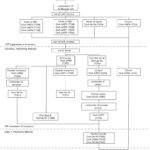
Figure 4. Summary of prior information for burials around the church of S. Pietro di Villamagna in Area B.
The medieval radiocarbon results
Twenty-four radiocarbon dates are available for the medieval cemetery at Villamagna (Tab. 2). Our preferred Bayesian model for the chronology of the church and cemetery at Villamagna is shown in Figure 3, with a summary of the archaeological information included in the model given in Figure 4. This model shows good overall agreement (Aoverall = 69.4%) and demonstrates that the radiocarbon results agree with our interpretation of the stratigraphy.9 Our preferred model is refined by a) the dates of foundation and suppression of the monastery, reported in contemporary documents and b) established masonry chronologies for the bell tower and cloister.
Early medieval period
Three individuals were dated from separate tombs within the narthex. The burial of an adult male (OxA-26150, 3864*) in front of the southern side-door of the church was covered by an infant grave (OxA-25050, 3833*). The first burial (OxA-26149, 3946*) in a tomb lined with marble slabs was also dated. The earliest burial in the narthex dates to 820–970 cal. AD (95% probability; OxA-26150). Burials appear to have ended between 900–990 (95% probability). The burial activity in the narthex continued for 0–90 years (95% probability) or 0–40 years (68% probability), that is between two and four generations.
Central medieval period
As in the preceding period, none of the samples were stratigraphically related to each other. Burials in the area we excavated north of the church started soon after the monastic precinct was built in 970–1010 cal. AD (95% probability) after the reported foundation of the monastery in AD 976.10 Three samples were dated from this phase (Central Medieval A): a skeleton from a walled tomb within the monastic precinct (OxA-26153, 4541*); a skeleton in a simple earthen grave outside the precinct (OxA-24972, 4274*) which was truncated by a large posthole; and a skeleton from a walled tomb in the area of the former narthex (OxA-26151, 3898*). These graves date to the late tenth or early eleventh century and were deposited over a short period of time, between 0–50 years (95% probability).
The construction of a cloister within the monastery precinct and the bell tower and porch in the churchyard represent a second phase in the central medieval period (Central Medieval B). Samples were taken from seven walled tombs found in the cloister (OxA-24973, 4342*), church (OxA-24965, 3102*) and churchyard (OxA-24971, 4265*; OxA-26152, 4307*; OxA-26155, 3688*; OxA-24966, 3536*; OxA-26154, 3859*). OxA-26154 (3859*) lies below the foundations of the bell tower and dates to 1020–1120 cal. AD (95% probability). These tombs were used for several generations between 60 and 140 years (95% probability). The masonry of the major building projects and their architectural refinements suggests a range running from the later eleventh to early twelfth century for the bell tower and the twelfth or perhaps early thirteenth century.11 The radiocarbon dating narrows the masonry chronology for the cloister and bell tower, suggesting a date range of 1070–1150 cal. AD (95% probability) for the bell tower and 1090–1150 cal. AD (95% probability) for the cloister.
Above the walled tomb containing 4285* (OxA-24971), a lime kiln was constructed between 1130–1230 cal. AD (95% probability), perhaps related to construction of the cloister and/or bell tower. The area was then used for a series of excluded burials in a third phase (Central Medieval C). The prone individual (OxA-24968, 4146*) provided a date of 1160–1260 cal. AD (95% probability). A further sample comes from an adult male (OxA-26156, 4348*) buried in the latest layer of the monastic cloister (Corridor IV) with a projectile and was dated to 1260–1300 cal. AD (95% probability).
Late medieval period
In the late medieval period, the area in front of the church was given over to a large earthen cemetery containing 354 skeletons; three samples were taken from north of the late medieval fortification wall (OxA-24873, 2688*; OxA-24872, 2399*; OxA-24874, 2801*) and four from south of the wall (OxA-24875, 2978*; OxA-24969, 2207*; OxA-24871, 2241*; OxA-24970, 2251*).12 A further sample was taken from an individual in an earthen grave within the church (OxA-24876, 3069*). Burials in the cemetery seem to have started between 1280–1380 cal. AD (95% probability) and ended in 1300–1430 cal. AD (95% probability). The earth cemetery did not span more than a century; burials occurred for 0–90 years (95% probability), or 0–50 years (68% probability), the equivalent of three or four generations. The construction trench of the fortification wall cut through these burials and was built between 1350–1480 cal. AD (95% probability), most likely the latter part of the fourteenth century since no fifteenth-century material culture has yet been found.
Conclusion
The difficulties we faced in dating the medieval activity at Villamagna are not unusual. Radiocarbon provided clear evidence of several chronologically discrete phases of burial at Villamagna, which would not have been available from any other method. Our stratigraphic analysis had revealed multiple phases of burial across Area B which we assumed spanned the sixth and fifteenth centuries. Bayesian modelling allowed us to both link up the different burial zones and significantly refine our understanding of the medieval period as follows:
- Our earliest burials date to the ninth to tenth centuries, far later than we had initially assumed, and contemporary with a phase of renovations to the church and residential occupation of Area A.
- Our excavations did not uncover the main cemetery zones contemporary with the eleventh- to thirteenth-century monastery: very few burials date to the monastic period which is characterized by three discrete cemetery phases punctuated by the construction of the bell tower and cloister.
- The earthen cemetery which provides the bulk of our skeletal sample is narrowly dated to the fourteenth century, revealing intense use over three to four generations.
Villamagna shows the potential of systematic radiocarbon sampling for refining chronologies of artifact-poor cemeteries and associated buildings and providing a significantly more detailed picture of the population that lived and died here.
1 Targeted radiocarbon dating programs within a Bayesian framework are increasingly popular and have produced accurate chronologies at a resolution of less than a century for medieval cemetery sites such as St Mary Spital in London (Sidell et al. 2007) and Wharram Percy (Bayliss et al. 2007).
2 On Bayesian modeling, see: Buck et al. 1992; Buck et al. 1996. The refined date distribution produced by the Bayesian model is known as a posterior density estimate; these distributions are based on probability and are printed in italics when expressed as date ranges in the text together with the name of the model parameter.
3 The 14C dates follow the international standard known as the Trondheim convention, see: Stuiver and Kra 1986. Ranges are quoted in the form recommended by Mook 1986, with the end points rounded outwards to 5 years where the error on the determination is ±25 or less, or to 10 years when the error is greater than this. The posterior density estimates are not absolute date ranges, but interpretative estimates which can and will change as further evidence from Villamagna becomes available.
4 All 14C dates were calibrated using OxCal v 4.1 (Bronk Ramsey 1995; 1998; 2001; 2009) using the IntCal09 calibration curve of Reimer et al. 2009.
5 See: Nitsch, print volume: 393–401.
6 On the potential bias of a high marine diet on radiocarbon measurements, see: Bayliss et al. 2007.
7 Replicate measurements were taken for quality control purposes on this sample (OxA-26146, OxA-26147) and were statistically consistent (X2 Test; df=1, T=0.9 (5% 3.8)).
8 See: Andrews, print volume: 231–8.
9 One sample was excluded from the overall model. OxA-26148 was taken from tomb T333, initially interpreted as a tomb associated with the fourth- or fifth-century brick building. A date of 1020–1170 cal. AD (95% probability) was obtained, suggesting either flawed interpretation of the stratigraphy or a contaminated sample. The latter seems most likely since this tomb was cut by T330, dated to 890–1020 cal. AD (OxA-26149).
10 See: Goodson, print volume: 31–3.
11 See: Goodson, print volume: 284–300.
12 OxA-24873 has a poor individual index of agreement with its recorded stratigraphic position (A = 51.7%), though the overall index of agreement for the model is acceptable if it is included. This measurement may simply by a statistical outlier.
